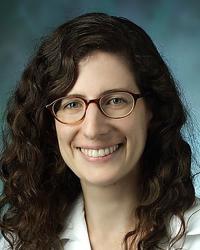Medical Student Elective
Faculty includes from all divisions in Diagnostic and Interventional Radiology
Course Description:
The Russell H. Morgan Department of Radiology and Radiological Science places a strong emphasis on education and mentoring at every level.
The one-month basic medical student clinical elective, the most popular elective in the School of Medicine for the past 10 years, introduces students to imaging both as potential future consultants and future residents. As an introduction to the fundamentals of diagnostic and interventional radiology, the course starts with foundational physics and an overview of how images are obtained. The course provides an introduction to and overview of the major subspecialties in Radiology: body imaging, neuroradiology, nuclear medicine, musculoskeletal imaging, pediatric imaging, breast imaging, and interventional radiology. Students are expected to formulate differential diagnoses based on image interpretation and gain a basic understanding of appropriate image ordering. Additionally, the course content places a strong emphasis on appropriate medical language and comportment.
The program includes 3-5 hours per day of lectures and case reviews, use of the American College of Radiology appropriateness criteria, access to multiple online learning files, observation of patient procedures and day-to-day workflow in the department, and participation in department conferences. Immersive, hands-on workshops are held throughout the course to give medical students practical experience in Ultrasound, CT, Radiography and Interventional Radiology. A ten minute case presentation is made during the last week of the course. The final exam is based on the interpretation of imaging studies in typical clinical settings. Free online textbook is available to all participating students.
Students wishing a more advanced or subspecialized experience often elect a radiology subspecialty observership, a second month on interventional radiology, pediatrics, musculoskeletal or with a specific mentor/faculty. Second months usually involve research opportunities.

